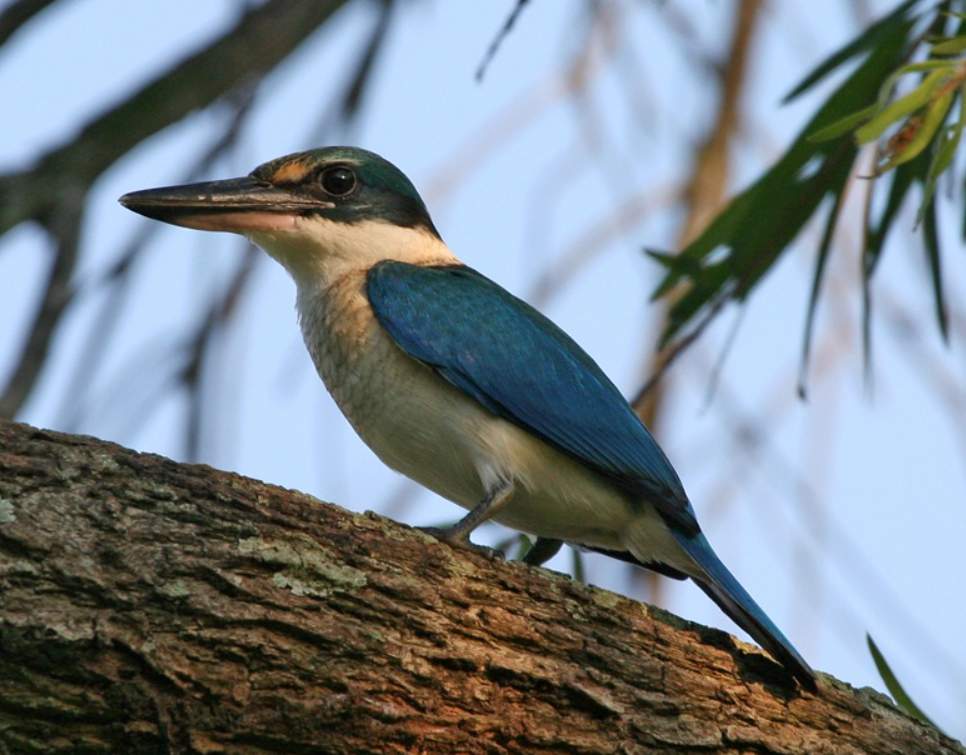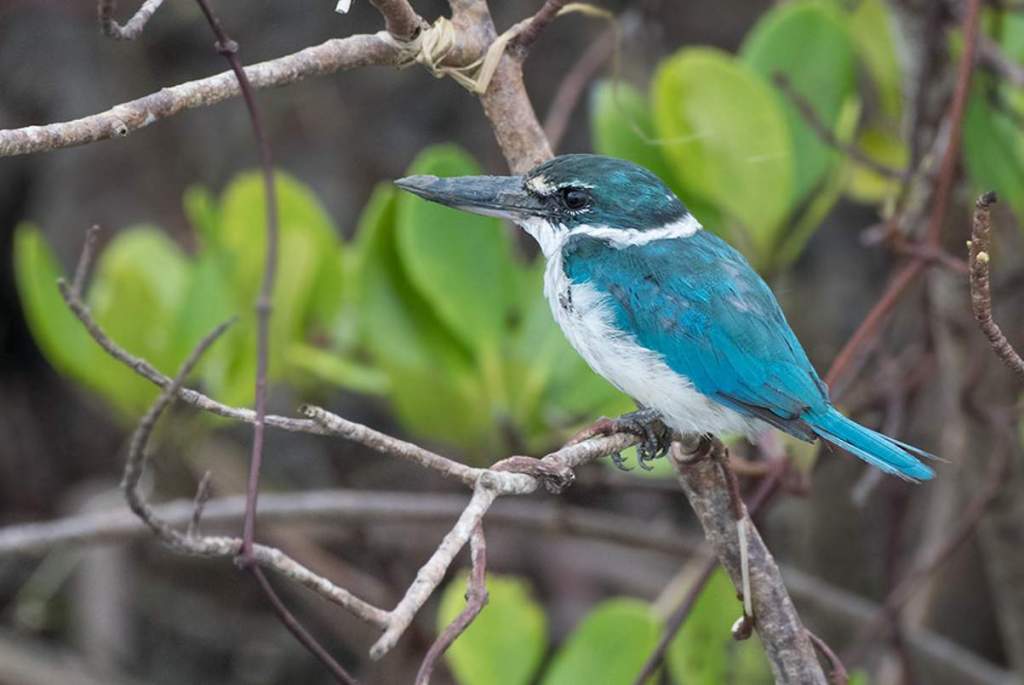Habitat: The Collared Kingfisher (Todiramphus chloris) is found mostly within coastal mangroves and big tidal creeks, where it lives singly or in loose pairs in territorial areas of several hundred meters or more along the coast. Other northern regions have a more sedentary population. It has never been satisfactorily explained why this kingfisher is restricted to mangroves in Australia.
It lives in a variety of wooded habitats throughout much of its range, from open woodlands and gardens to mangroves and rainforests. Its plumage varies in color from one region to another as well. On some of the smaller island groups east of New Guinea, the birds have buff-breasted bodies with white and cinnamon heads, and they show marked differences between sexes. They have turquoise-blue heads and backs in India and Indonesia. Australia has the dullest and greenest races.

A male and female termite work in turn to drill their nest burrow into a termite mound. As they fly swiftly at the mound and pierce it with their bills, the birds gouge out the entrance. Following this initial opening-up operation, the birds cling to the sides of the entrance and dig their burrows with their bills and feet, which takes about two weeks.
Termites may then leave the burrow vacant for a week or longer, presumably to seal off exposed chambers and withdraw. The species ranges from the Red Sea to Polynesia across southern Asia. Pacific kingfishers, islet kingfishers, Torresian kingfishers, Mariana kingfishers, and Melanesian kingfishers are among the subspecies and subspecies groups of this species.
Vocalizations: It has a wide range of calls based on its geographical location. A collared Kingfisher’s voice is a double-note kik-kik or ke-kik repeated three or four times in rapid succession. In mangroves, birds perched on high vantage points are heard giving their voice several hundred meters away.
Nest & Breed: Further, nesting and breeding occur between September and probably March. There are usually two broods a year. The nest is excavated in an arboreal termite mound, tree hollow, or sometimes an earth bank, 3-15 meters above ground; usually in mangroves or adjacent tall trees. There is a chamber 150 mm in diameter and 100 mm in height at the end of the burrow.
Eggs: Collared Kingfisher lays two or three eggs; smooth, glossy white; broadly oval to almost spherical, 32 x 26 mm. The eggs are laid on rubble on the chamber floor.
Diet: They feed on crustaceans, small fish, worms, insects, reptiles, and other small tidal animals from the surface of mud and shallow pools exposed by low tides, rather than diving into the water to feed. The method they use is conventional perch-and-pounce. Having been sitting motionless for some time, staring intently down at bare branches for any sign of movement, the birds suddenly plummet down onto the victim, grabbing it by the head, and carrying it back to their perch to eat.
Migration: There is evidence that kingfishers are nomadic or migratory in southeastern regions; most birds arrive in September to breed in the mangroves of southern Queensland and northern New South Wales and leave in March for the Torres Strait and southern New Guinea.
Identification: The male head is blue to brown-olive. White spot in front of the eye; a broad black band from the base of the bill through eyes and ear coverts and around the nape, bordered by a white collar below. Back, shoulders, rump, and upper tail coverts blue-to brown-olive. Tail deep turquoise-blue above, dull dark grey below. Wings deep turquoise-blue, with flight feathers dusky on inner webs, grading to deep turquoise-blue on outer.
The underparts are white with the lower thighs dusky olive. The eyes are dark brown. The bill is black except for the pale flesh base to the mandible. The feet are dark flesh-grey. The female bird is duller; with brown wash to the crown and back; the rump, wings, and tail look a bit green-blue. The immature bird is similar to a female, but with a collar, cheeks, breast, and flanks flecked or finely barred with black. These flecks may be retained until the second year.
Family: The collared Kingfisher belongs to the subfamily Halcyoninae.
Distribution: Around the northern coast of Australia and offshore islands south to Shark Bay, Western Australia, and northern New South Wales in the east, it is restricted to mangroves.
Courtship: A male chases a female during courtship-perhaps vice versa-in vigorous, darting flights accompanied by harsh twittering.
Alternative Names: This is also known as the Mangrove Kingfisher, Sordid Kingfisher, and White-collared Kingfisher.
Size: Collared Kingfishers measure 250-280 mm long and weigh 51 to 90 grams for males and 54 to 100 grams for females.
Subspecies: A large and moderately rich bluish-green subspecies lives around the coast of the Kimberley region of Western Australia to the mouth of the Richmond-Clarence River, New South Wales; the other is quite dull and brown-green along the coast of the Pilbara region. The Red Sea to northern Polynesia is home to over 40 other races.
Status: Least Concern
Read More – Buff-breasted Paradise-Kingfisher







